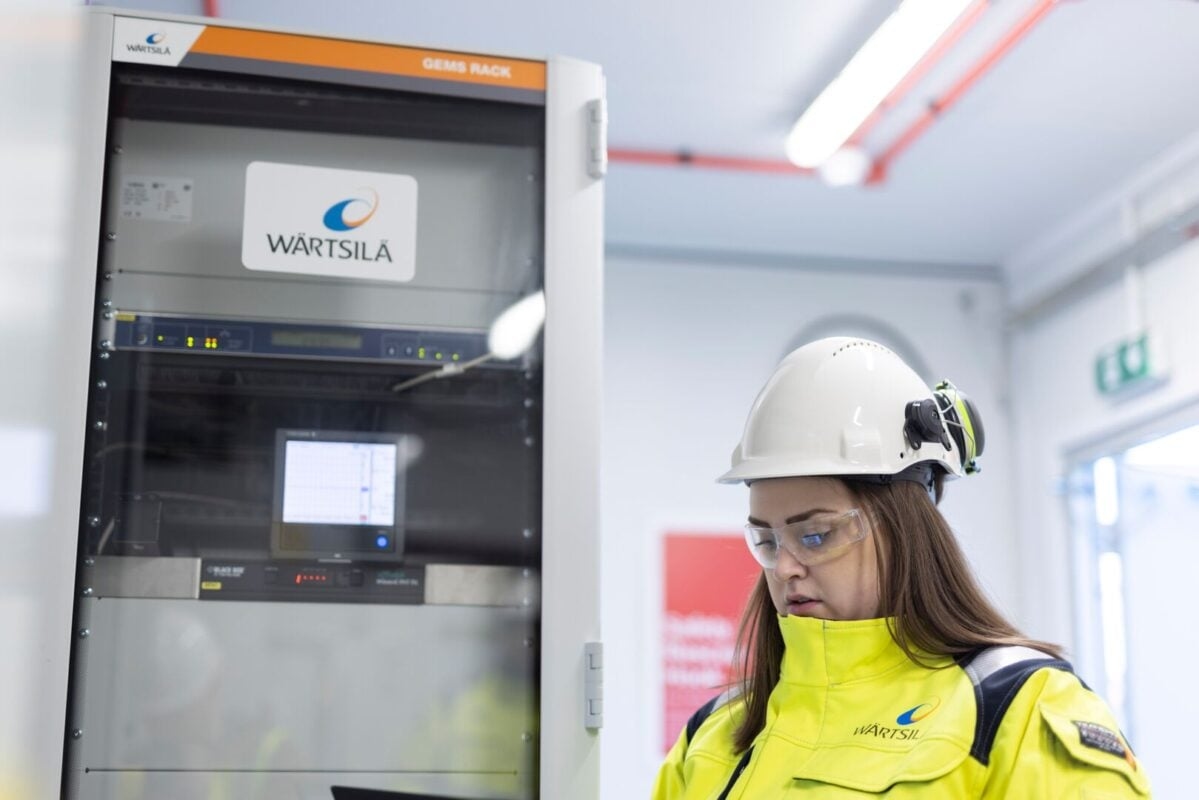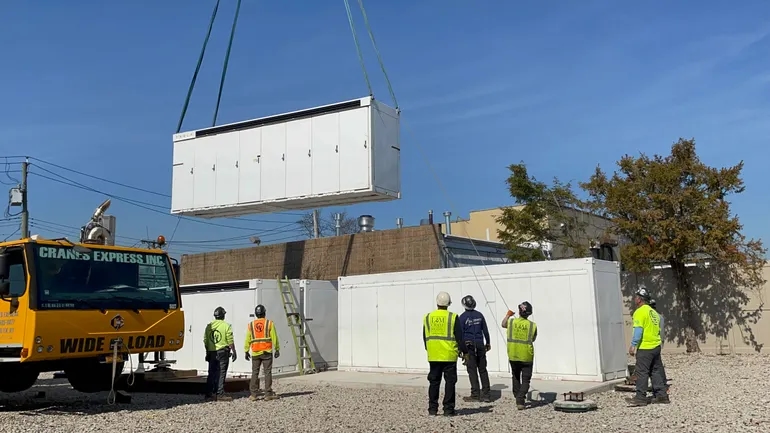Wärtsilä opts for in-house control over battery storage data analytics

Until now, cloud-based data analytics software for BESS operators has largely been sourced from third parties and not included in the technology provider or system integrator’s packaged offering, as Wärtsilä is now doing.
Rival system integrator FlexGen launched a state of health (SoH) management upgrade to its HybridOS EMS in March and later SoC management in August, but the features are not thought to comprise a full analytics suite.
GEMS Pulse product manager Steve Merrick told Energy-Storage.news in an interview that the software platform will work with both Wärtsilä and non-Wärtsilä equipment. However, the initial focus is on customer sites using Wärtsilä’s GridSolv Quantum BESS solution.
While third-party analytics providers such as ACCURE, TWAICE and PowerUp would advocate that having an analytics solution independent from the OEM or system integrator eliminates potential conflicts of interest, Merrick argued that an in-house solution has two other advantages.
The first is that it integrates with the rest of the software and hardware on the site, Merrick said.
“Let’s say that we detect that a specific system is consistently more imbalanced than the site. We can easily use GEMS to trigger a calibration and increase the automated calibration frequency of that system. A third-party analytics system cannot control the site,” Merrick said.
“It can make a recommendation, but then it’s up to the asset operator to take actions from there—creating barriers to getting the problem solved quickly.”
The other advantage is that the creation and ongoing evolution of GEMS Pulse can leverage a feedback loop from Wärtsilä’s service team that “works with customers to troubleshoot and optimise their systems on a daily basis.”
To date, Wärtsilä’s service team has optimised more than 9GWh of battery storage capacity in the company’s portfolio of customer projects.
“That valuable knowledge is embedded in GEMS Pulse. Third-party systems lack the feedback loop from an in-house service team,” Merrick said.
GEMS Pulse presents users with a single interface for monitoring and managing their energy storage systems, with key features including forecasting tools, tracking for asset performance against contractual guarantees and anomaly detection.
While Wärtsilä BESS equipment already has “robust safety in place that would result in battery components tripping offline before any safety risks are at play,” the analytics layer that GEMS Pulse adds can detect things like current differences early on, Merrick said.
This early anomaly detection prevents the system from needing to go offline, and, therefore, keeps it available for longer.
Some people may also not realise how analytics can also inform the operating strategy of a BESS site, Merrick said.
“If a site largely does frequency response or ancillary services and the SoC stays within a 40-60% range, then it’s going to be tricky to get an accurate measurement of cell imbalance or SoC. Solar shifting, which might see a site go from 90% down to 10% SoC, is going to get a much more accurate reading,” Merrick said.
“Therefore, it’s important to analyse the operational profile of a site to understand what sort of accuracy we can expect, to then come up with a plan on how to optimise it further.”
GEMS Pulse’s scenario generation can also be used to plan for applications that require a specific amount of capacity to be available over an asset’s lifetime and factor in battery health, Merrick claimed.
“Some markets contain capacity markets where an asset operator must have a certain number of megawatt-hours available for multiple years. Our scenario generation tool can help an asset operator forecast how much capacity they will have in five years, so that they can be confident in their capacity market bid today,” Merrick said.
Steve Merrick and his colleague Andrea Meister recently took part in ‘Demystifying the BESS metrics that matter most,’ a sponsored webinar for Energy-Storage.news, in which the duo discussed the meanings and importance of SoC, SoH, cell imbalance and real-time usable energy.
In that webinar, Meister noted that it is much harder to get an accurate estimate of the SoC of lithium iron phosphate (LFP), the battery chemistry of choice for grid-scale BESS applications, than in legacy technologies like lead-acid and nickel manganese cobalt (NMC).
Despite this limitation, LFP is likely to remain top of the tree, although newer chemistries, particularly sodium-ion (Na-ion), offer promise, Steve Merrick said.
“LFP has a unique blend of safety, cycle life, and cost that caters well to the grid storage space,” Merrick said.
“Any chosen chemistry will have trade-offs. NMC is more energy-dense, but the input materials are more expensive. While you see a more even split in the electric vehicle (EV) market between LFP and NMC, the density advantage of NMC matters less for grid storage than in EVs, where space is at a premium.”
Wärtsilä appears to be a natural fit to develop an in-house analytics solution. The Silicon Valley software engineering background of US system integrator Greensmith Energy and its GEMS platform are thought to have been among the primary reasons why Wärtsilä acquired Greensmith in 2017 to mark the Finnish company’s entry into the energy storage space.
energy-storage





